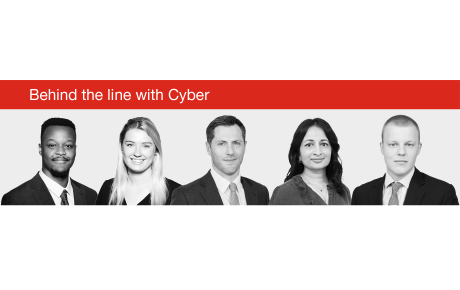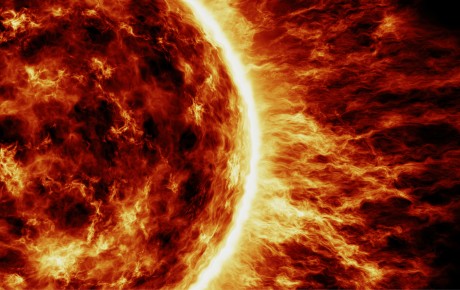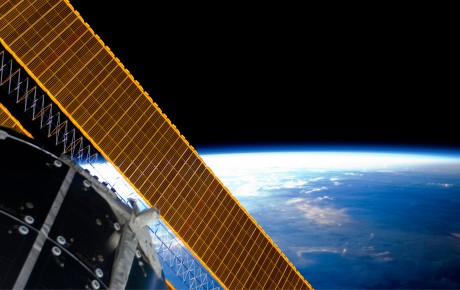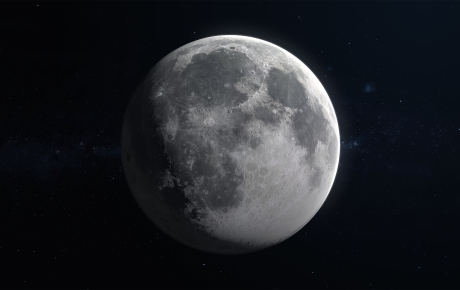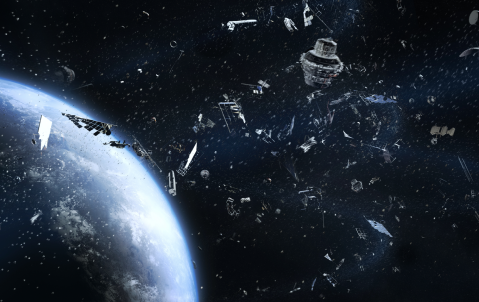
Action to clean up space
On 28 September, Frank Rubio set a record for the longest US spaceflight of 371 days. But it was never meant to happen. He and two Russian cosmonauts should have stayed in space for only six months, but they became stranded at the International Space Station when their capsule was damaged by space debris.
The rubbish cluttering the skies above us is a growing threat to spacecraft crossing its path, from manned missions to explore the Moon and beyond to the vast new satellite constellations set to be put in orbit.
“We’ve entered a new chapter in space, with an unprecedented number of launches planned” says Pascal Lecointe, Space Line Underwriter at Hiscox London Market. “But the threat posed to these missions by space debris is very real.”
“We’ve entered a new chapter in space, with an unprecedented number of launches planned” says Pascal Lecointe, Space Line Underwriter at Hiscox London Market
The mushrooming number of satellites on which we rely for our weather, navigation, banking, internet must share space with what the European Space Agency estimates is more than 130 million pieces of junk, which are out of control and travelling at speeds many times faster than a speeding bullet.
They’re rubbish left from the space missions undertaken since the late 1950s. They include over 2000 spent rocket stages, nearly 3000 dead satellites and millions of fragments, often measuring just a couple of millimetres. But even a flake of paint, screw, or piece of insulation from spent rockets hurtling at 17,500 mph in orbit around Earth could knock out a spacecraft.
In 2013 there were 1,187 active satellites in space. In 2022, there were 6,905. And there are plans to put thousands more satellites into space. SpaceX intends to launch as many as 42,000 satellites as part of its Starlink mega-constellation, while Amazon plans to launch over 3,000 satellites to create global satellite internet coverage.
Space is vast, but these satellites are all headed to the same places: low-Earth orbits (LEOs), from which they can easily monitor and communicate with our planet. So, it’s important that these increasingly congested orbits are protected.
Collisions are already occurring
The damage to the Rubio’s Soyuz capsule is one in a growing list of collisions. In April, the Azersky communications satellite abruptly failed, reportedly due to it being hit by a piece of space debris.
More satellites and more debris mean more collisions are likely in future. “The risk of collision in the most crowded orbit (800km from Earth) is now one in 1000,” says Lecointe. “Just a few decades ago, when there were far fewer satellites and less space debris, the risk of collision was one in 1 million.”
More satellites and more debris mean more collisions are likely in future. “The risk of collision in the most crowded orbit (800km from Earth) is now one in 1000,” says Lecointe.
Something must be done, otherwise more collisions will create more debris, which will cause more crashes that would create more destruction. This self-generating spiral, known as the Kessler Syndrome, could lead to “an ecological tipping point that may render certain orbits unusable” according to a 2020 report by the Organisation for Economic Co-Operation and Development.
This higher risk is adding to the challenges facing the space insurance market, which is being asked to cover more launches and keep on top of a burst of innovation unseen in the space industry in 50 years, with pioneering new rocket designs and more complex satellites being designed and tested.
“The space industry is pushing the boundaries of technology. As insurers we fully back their efforts. But there’s no doubt it’s risky, as we’re seeing in an increasing number of technical issues. Space debris poses a threat that everyone in the space business needs to address,” says Lecointe.
Cleaning up the Wild West above our heads
Space is the final frontier, but it has for years resembled the old American frontier of the 1800s, says Lecointe, with few rules that were widely ignored. But there are now signs of action.
The Federal Communications Commission, the US agency regulating satellites, adopted a new rule in September 2022 requiring satellites in LEOs to leave their orbits and burn up in Earth’s atmosphere no later than five years after their missions.
“The FCC may set a de facto global standard for commercial satellite operators, as their rule not only applies to US-licensed satellite operators but also global companies looking for access to the huge US telecoms market,” says Lecointe.
In October, the FCC announced its first punishment for space debris, agreeing a $150,000 settlement with an operator for failing to properly dispose of one of its old communications satellites.
The FCC set several conditions on SpaceX’s application to launch its new Starlink satellites, including that if too many of them fail, the company must pause its launch programme to work out what’s going wrong and what it will do to address the problems.
The European Space Agency has also committed to introduce a Zero Debris approach as part of its Clean Space Initiative by 2030, while in June the Astra Carta was launched, backed by King Charles III, to create a commitment for the responsible and sustainable use of space by both the private and public sector.
New collaboration to help avoid accidents
Hiscox is also helping space operators keep their satellites safe while in orbit. With the growing risk of collisions, satellite operators are increasingly likely to need to manoeuvre their craft out of harm’s way. But to do so, they’ll need to know precisely when and where to guide their satellites to avoid a crash.
It has signed an agreement with Share My Space for Hiscox’s space underwriters to use detailed data from its global network of powerful telescopes to assess the risks of launching spacecraft into LEOs more accurately. Hiscox will also provide satellite operators with collision warnings and advice on manoeuvring them to avoid crashes.
The collaboration will "enable space operators to navigate in orbit with high confidence and enhanced security.” Romain Lucken, CEO and co-founder of Share My Space.
Launching and operating spacecraft is risky enough without the threat of them being destroyed by debris, says Lecointe. “There’s a growing realisation that low-Earth orbits are a finite natural resource that needs to be conserved, just like those on our planet. These first steps towards cleaning up space will make it a safer environment and help create a more sustainable future for space development.”
“There’s a growing realisation that low-Earth orbits are a finite natural resource that needs to be conserved, just like those on our planet. These first steps towards cleaning up space will make it a safer environment and help create a more sustainable future for space development.” says Lecointe.

